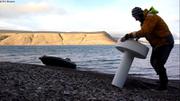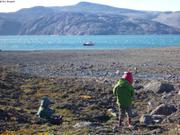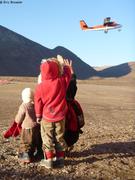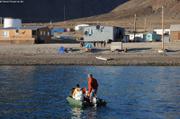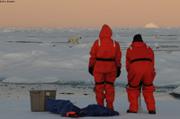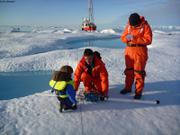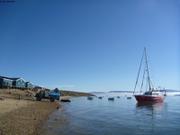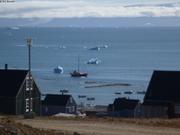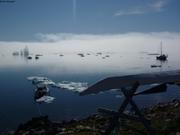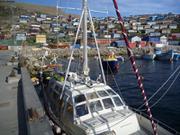Science et exploration dans le détroit de Jones
Every Friday, weather permitting, except during polar night, the school is inviting parents to join the children for a picnic or a walk. A great time to get to know Grise Fiord inhabitants better!
Weather forecast are good for three days. Friday evening, Vagabond set sail to the West. The following evening, at the end of Eidsbotn Fiord (Devon Island), we reach the latest known coordinates of the drifting buoy that was deployed north of Ellesmere Island by Christian Haas in April 2010. The buoy is there! After a long trip, it has not been moving for two weeks, it was probably pushed on shore by some big waves. Antennas are damaged, this is why no more position are sent.
Once the buoy is on board, and after few hours of rest and some preparation, we sail to Fram Sound for a CTD section, for Institute of Ocean Sciences. Despite wind and current, the CTD is storing requested data. France is steering the boat to keep the position at each station, I'm winching the CTD down to the seabed and up, while our two young daughters are watching a cartoon! Then, all happy, we find an shelter, the best for weeks, in the little Bay of Woe. Time to explore the region, before choosing our winter anchorage... A polar bear is lying down on the closest beach, as if to watch us better.
